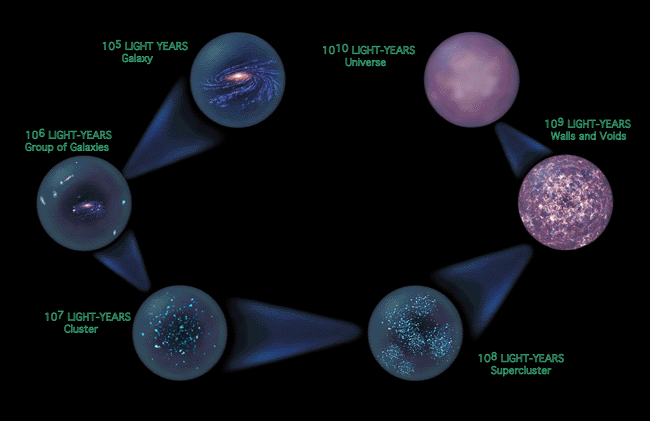
| Readings: |
Observable
Universe |

Origin of Structure :
As we move forward in time from the beginning of the Universe we pass through the inflation era, baryongenesis, nucleosynthesis and radiation decoupling. The culmination is the formation of the structure of matter, the distribution of galaxies in the Universe.
During radiation era growth of structure is suppressed by the tight interaction of photons and matter. Matter was not free to response to its own gravitational force, so density enhancements from the earliest times could not grow.
Density enhancements at the time of recombination (having their origin in quantum fluctuations that expanded to galaxy-sized objects during the inflation era) have two routes to go. They can grow or disperse.

The `pressure effects' that density enhancements experience are due to the expanding Universe. The space itself between particles is expanding. So each particle is moving away from each other. Only if there is enough matter for the force of gravity to overcome the expansion do density enhancements collapse and grow.
Top-Down Scenario:
Structure could have formed in one of two sequences: either large structures the size of galaxy clusters formed first, than latter fragmented into galaxies, or dwarf galaxies formed first, than merged to produce larger galaxies and galaxy clusters.
The former sequence is called the top-down scenario, and is based on the principle that radiation smoothed out the matter density fluctuations to produce large pancakes. These pancakes accrete matter after recombination and grow until they collapse and fragment into galaxies.
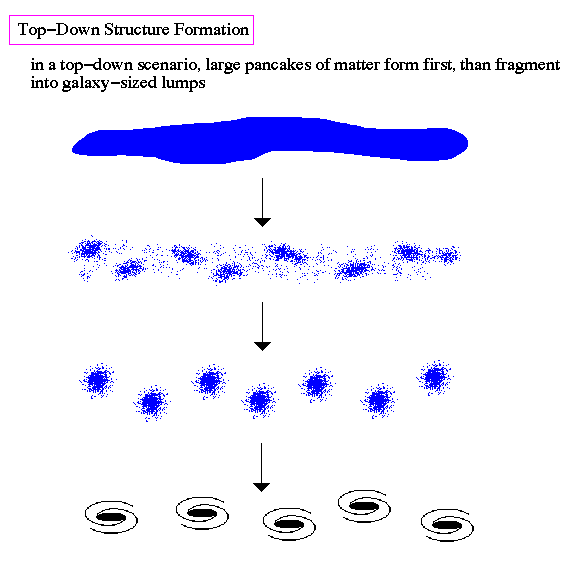
This scenario has the advantage of predicting that there should be large sheets of galaxies with low density voids between the sheets. Clusters of galaxies form where the sheets intersect.
Bottom-Up Scenario:
The competing scenario is one where galaxies form first and merge into clusters, called the bottom-up scenario. In this scenario, the density enhancements at the time of recombination were close to the size of small galaxies today. These enhancements collapsed from self-gravity into dwarf galaxies.
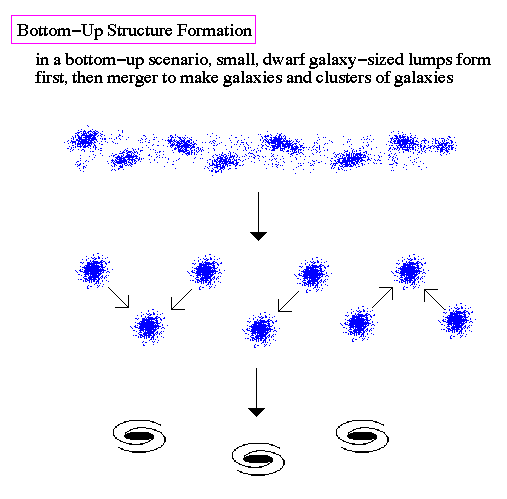
Once the small galaxies are formed, they attract each other by gravity and merge to form larger galaxies. The galaxies can then, by gravity, cluster together to form filaments and clusters. Thus, gravity is the mechanism to form larger and larger structures.
Hot Dark Matter vs. Cold Dark Matter :
Each scenario of structure formation has its own predictions for the appearance of the Universe today. Both require a particular form for dark matter, a particular type of particle that makes up the 90% of the Universe not visible to our instruments. These two forms of dark matter are called Hot and Cold.
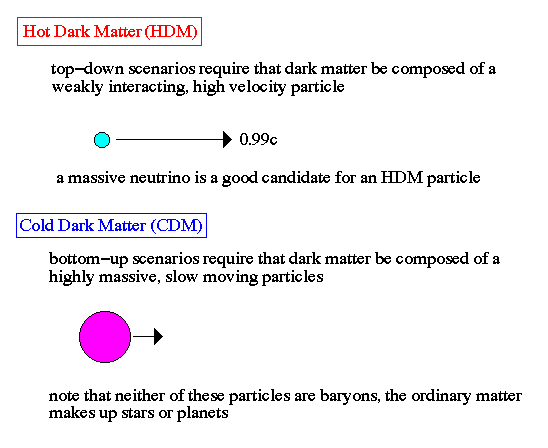
HDM produces large, smooth features since it travels at high velocity. Massive neutrinos move at near the speed of light, yet interact very weakly with matter so can serve to smooth out large density enhancements.
CDM, on the other hand, is slow moving and, therefore, clumps into small regions. Large scale features are suppressed since the small clumps grow to form small galaxies.
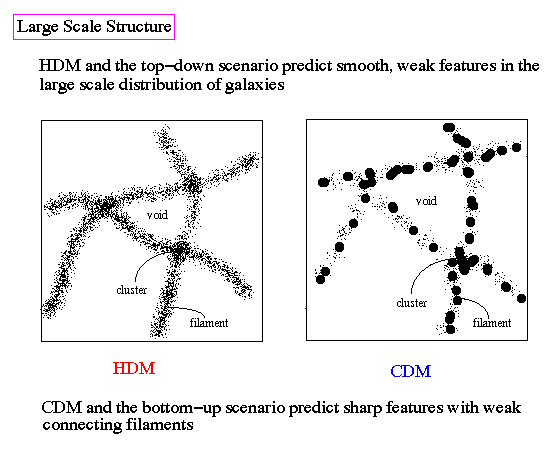
There is strong evidence that galaxies formed before clusters, in the sense that the stars in galaxies are 10 to 14 billion years old, but many clusters of galaxies are still forming today. This would rule against the top-down scenario and support the bottom-up process.
Large Scale Structure :
Galaxies in the Universe are not distributed evenly, i.e. like dots in a grid. Surveys of galaxy positions, e.g. maps of galaxies, have shown that galaxies have large scale structure in terms of clusters, filaments and voids.
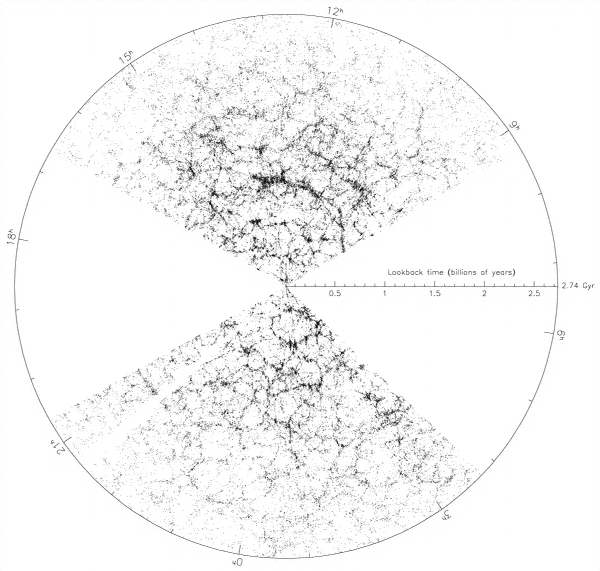
The clusters, filaments and voids reflect the initial fluctuations at recombination, plus any further evolution as predicted by HDM or CDM models. CDM and HDM models have particular predictions that can be tested by maps or redshift surveys that cover 100's of millions of light-years.
Interestingly enough, the real distribution of galaxies from redshift surveys is exactly in-between the HDM and CDM predictions, such that a hybrid model of both HDM and CDM is needed to explain what we see.
The mapping of large scale structure also has an impact on determining is the Universe is open or closed. Galaxies on the edges of the filaments will move in bulk motion towards concentrations of other galaxies and dark matter. These large scale flows can be used to determine the density of large regions of space, then extrapolated to determine the mean density of the Universe.
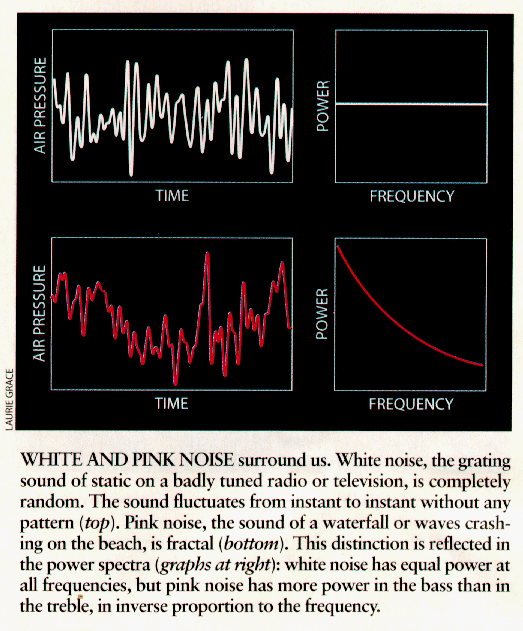


|
|

|